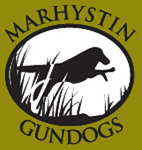RD/OSD –
(Retinal Dysplasia) – (Oculo Skeletal Dysplasia)
RD/OSD – (Retinal Dysplasia) – (Oculo Skeletal Dysplasia
Retinal Dysplasia/OSD Background of Disease: Retinal Dysplasia-retinal folds (RD) is a common clinical observation in many dog breeds. Since many retinal folds are benign and of unknown heritability, veterinary ophthalmologists will often advise that breeding dogs with RD is an acceptable option. However in two breeds, the Labrador retriever and the Samoyed, RD is of much greater concern. RD in Labradors and Samoyeds will cause a dog to fail a CERF examination, the recommended annual eye examination that is done in North America by certified veterinary ophthalmologists, diplomates of the American College of Veterinary Ophthalmology (ACVO). In such cases, breeding is not advised because RD in these breeds can be an indication that the dog is a carrier of a serious inherited syndrome called OSD (OculoSkeletal Dysplasia). OSD is a severe condition in which the dogs show a variety of skeletal malformations, including shortened limbs (dwarfism), and blindness at an early age; the blindness results from a generalized malformation of the retina that causes a partial or full retinal detachment and cataracts.
RD/OSD Mutations Identified: After extensive research in the laboratories of Drs. Greg Acland and Gus Aguirre, ACVO diplomates and genetic investigators at Cornell University and the University of Pennsylvania, the mutations responsible for OSD in the Labrador retriever and Samoyed have been identified. This work, which benefited in its early stages from support by the Morris Animal Foundation, has resulted in a DNA test that identifies whether a dog has no copy (is Normal), has 1 copy (is a Carrier) or has 2 copies of the mutation (is Affected). This DNA test will be very helpful to breeders who need to rule out all concern that OSD is playing a role in their dog’s diagnosis of RD. The test will also allow identification of “silent” Carriers of OSD where no RD is observed. A manuscript describing the RD/OSD mutations and their physiological significance is in preparation (Goldstein et al.).
Inheritance of RD/OSD: It has been known for many years that Carriers of OSD often have retinal dysplasia-retinal folds and that when two Carriers of OSD are bred, a quarter of their litter, on average, are dwarfed and blind. This inheritance pattern, as well as the equal distribution of the disease in males and females, indicated that there was a single gene responsible for the disease and that it was autosomal (i.e. that the gene was not on the X chromosome). However, unlike many other DNA tests that Pawprint Genentics offers for autosomal mutations, the OSD mutation is not “simple” recessive. Because the Carriers typically show symptoms of RD—one can interpret this as a “mild” or partial expression of OSD in the Carrier. Two copies of the OSD mutation produce a “severe” or full expression of OSD—i.e. dwarfism and blindness. Another way to describe this type of inheritance is “autosomal dominant with incomplete penetrance” or “incomplete dominance”.
Pawprint Genetics DNA Test for Inherited RD/OSD: The RD/OSD DNA test will identify dogs as being Normal, Carrier, or Affected with OSD. It is expected that many, but not all, Carriers will show significant retinal dysplasia-retinal folding. As more dogs are tested, we will gain a better understanding of how common “silent” Carriers are (i.e. Carriers that lack retinal folds) in the general population. We will also be able to gain understanding of what percentage of RD in Labradors and Samoyeds is due to OSD. It is with the aim of better understanding this and other eye diseases that OptiGen order forms include the request for CERF or other ophthalmological clinical record information. If the dog has a history of abnormal eye exams, OptiGen also appreciates receiving a copy of the exam with the order form. These records greatly help to advance research in the genetics of canine eye diseases.
Suggestions for Implementation of the RD/OSD Test: If a Labrador retriever or Samoyed is identified with Focal or Multi-focal retinal dysplasia (retinal folds) during an eye examination by an ACVO diplomate, currently the dog is not eligible for certification within the CERF registry. In this case, the Pawprint Genetics DNA test will determine if the folds are caused by the mutation responsible for OSD. A NORMAL OSD result will indicate that the retinal folds are not caused by the OSD mutation and represent the frequent benign Focal/Multi-focal retinal folds found in these and other breeds. If the presence of Focal or Multi-focal retinal dysplasia (retinal folds) is not associated with the RD/OSD mutation, then the dog is considered free of a major inherited eye disease. Please note that these comments refer only to Focal/Multi-focal reitnal dysplasia (retinal folds). Geographic retinal dysplasia may represent a different, possibly inherited, disease. Pawprint Geneticsis approaching ACVO, CERF and other organizations involved with genetic eye registries to develop a system by which a dog once diagnosed as clinically “affected” for retinal-dysplasia-folds can be ‘recertified’ if it tests clear for the RD/OSD mutation using the Pawprint GeneticsDNA test.

